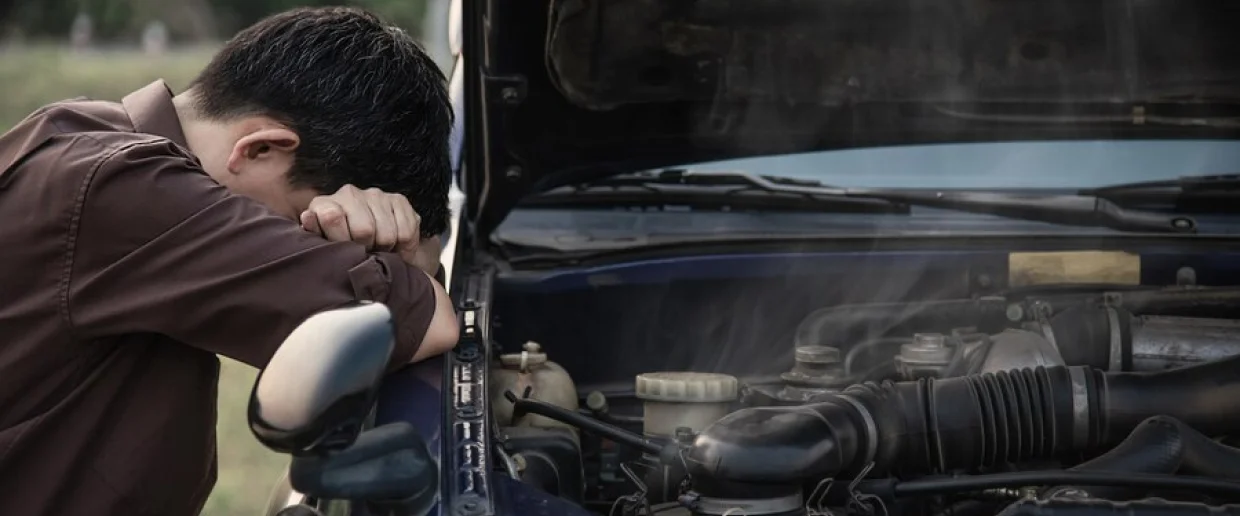

The combination of steep inclines, unpredictable weather, and serpentine routes contributes to a heightened risk for those navigating its expanses. As truck accidents become a more prevalent concern within this rugged terrain, the importance of awareness and preparedness cannot be overstated.
These incidents not only underscore the hazards intrinsic to mountain driving but also highlight the need for specialized legal support when accidents occur.
Facing a truck accident requires expertise that understands the intricacies of these specific challenges. Olson Personal Injury Lawyers is equipped to provide this support, offering experienced legal guidance to navigate the aftermath of such incidents.
If you find yourself or a loved one impacted by a truck accident in this region, do not hesitate to reach out. Contact us at (720) 730-4325 for a consultation, and together, we can address the complexities of your case with the informed, dedicated representation you deserve.
Semi-truck accidents hold particular concern due to the unique interplay of geographical and weather-related factors that exacerbate the potential for serious incidents. The region’s mountainous terrain, characterized by steep grades, tight turns, and often narrow roadways, presents significant challenges for semi-truck maneuverability and braking capabilities.
These geographical features increase the likelihood of accidents, as even the most experienced drivers can struggle to maintain control under such conditions.
Additionally, the weather in the Rocky Mountains is notoriously unpredictable and can change rapidly, presenting further hazards for semi-trucks. Heavy snowfall, ice, fog, and rain significantly reduce visibility and road traction, further complicating the safe operation of these large vehicles.
Semi-trucks, due to their size and mass, are particularly vulnerable to losing control in adverse weather conditions, leading to jackknifing, rollovers, and collisions with other vehicles.
Given these factors, semi-truck accidents are not only more likely but also tend to be more severe, often resulting in significant injuries or fatalities. The combination of challenging driving conditions and the inherent risks associated with semi-truck operations underscores the critical importance of safety measures and the need for specialized legal assistance when accidents occur.
Semi-truck accidents region take various forms, each with its own set of contributing factors and potential for devastation. Understanding the key types of semi-truck accidents is crucial for addressing the unique challenges faced by drivers in this region.
Jackknife accidents occur when the trailer of a semi-truck folds at an acute angle to the cab, resembling a folding pocket knife. Steep descents and sharp curves can force drivers to brake suddenly or maneuver unexpectedly, leading to a loss of control that precipitates these accidents.
The truck’s momentum, combined with the gravitational pull on inclines, significantly increases the risk of jackknifing.
The impact of high winds and uneven terrain is particularly pronounced in rollover accidents, where semi-trucks tip over onto their sides or roofs. These conditions are prevalent, where sudden gusts can destabilize trucks, especially those with high centers of gravity or uneven loads.
Additionally, the uneven terrain, including embankments and ditches alongside mountain roads, contributes to vehicles tipping over when they veer off the road.
T-bone or side-impact collisions at intersections are often the result of visibility issues and the complexity of mountain intersections. The undulating landscape can obscure drivers’ views of oncoming traffic or traffic signals, leading to misjudged crossings and devastating impacts.
These accidents are particularly dangerous due to the minimal protection offered by the sides of vehicles.
Sudden weather changes, characteristic of the Rocky Mountains, can lead to reduced visibility and slippery roads, causing drivers to brake unexpectedly. Combined with traffic congestion, particularly in areas where roads narrow or during tourist seasons, these conditions foster rear-end collisions.
Semi-trucks, requiring longer distances to stop, are often involved in these accidents, causing significant damage and injuries.
Underride accidents, where a smaller vehicle slides underneath a semi-truck, are deadly occurrences significantly influenced by downhill speeds. The momentum gained by semi-trucks when descending mountainous terrains can make it difficult to stop quickly, increasing the risk of underride accidents, especially when smaller vehicles are forced to brake suddenly in front of them.
Each of these accident types underscores the inherent dangers of navigating semi-trucks. The combination of natural and human-made factors in these accidents highlights the need for heightened awareness, strict adherence to safety protocols, and the importance of experienced legal representation when accidents occur.
Working through the nuances of truck accident litigation presents distinct challenges that demand careful legal navigation. Among these, jurisdictional issues and the arduous task of proving negligence stand out as substantial hurdles for claimants.
The Rocky Mountain region cuts across several states, each with its unique set of laws and procedural rules that can significantly impact the outcome of a truck accident claim. This geographic and legal diversity introduces jurisdictional complexities, particularly in determining the most appropriate venue for filing a lawsuit.
Factors such as the location of the accident, the residence of the parties involved, and the principal place of business for commercial trucking companies can influence jurisdictional decisions. Additionally, when accidents involve commercial trucks engaged in interstate commerce, federal regulations, and statutes may also come into play, adding an additional layer of legal complexity.
A critical component of truck accident litigation is establishing negligence, a task that involves demonstrating that the truck driver, trucking company, or another related party failed to exercise reasonable care, leading to the accident. In the context of the Rocky Mountains, the challenge of proving negligence is magnified by the region’s unique environmental conditions, such as steep grades, variable weather, and tight curves, which can all contribute to accidents.
Plaintiffs must often rely on extensive evidence gathering, including accident scene reconstruction, analysis of trucking logs and maintenance records, and expert testimony to build a persuasive case. This evidence must not only illustrate how the accident occurred but also link the defendant’s actions or inactions directly to the event.
The intricacies of managing a truck accident claim, from navigating jurisdictional challenges to proving negligence, underscore the importance of specialized legal expertise. Claimants benefit significantly from engaging with truck wreck lawyers who are not only well-versed in the multifaceted nature of truck accident litigation but also familiar with the specific demands of pursuing such claims in this unique geographical and legal landscape.
In the vast and rugged expanse of the Rocky Mountains, the beauty of the landscape belies the inherent dangers of navigating its roads, especially for trucks. The unique terrain, characterized by abrupt weather changes, steep grades, and tight curves, demands a level of vigilance and preparedness that goes beyond the ordinary.
Accidents involving trucks in this region highlight not only the potential hazards but also the complexities involved in legally resolving the aftermath.
Awareness and readiness play pivotal roles in both preventing truck accidents and effectively managing their consequences. The variety of accidents, from rollovers and jackknifes to T-bones and rear-end collisions, each introduces distinct challenges in the context of the Rocky Mountains.
These challenges are further magnified when navigating the legal pathways to justice and compensation. The intricacies of establishing fault, coupled with the jurisdictional nuances across this mountainous region, underscore the necessity for expert legal guidance.
At Olson Personal Injury Lawyers, we understand the daunting nature of these challenges. Our expertise in handling truck accident claims equips us to navigate the complex legal landscape with precision and dedication.
Our approach is tailored to address the unique aspects of each case, ensuring that our clients receive the comprehensive support and representation they deserve.
For those facing the difficulties of a truck accident, the journey toward resolution requires knowledgeable and experienced legal assistance. Olson Personal Injury Lawyers is here to provide that support, guiding you through every step of the process with expertise and empathy.
We invite you to contact us at (720) 730-4325 for a consultation. Let our team assist you in navigating the legal complexities of your case, ensuring your rights are protected, and your voice is heard.
In conclusion, truck accidents can be overwhelming, but with the right legal support, you can navigate through the complexities and emerge stronger. At Olson Personal Injury Lawyers, we're here to guide you every step of the way towards justice and rightful compensation.